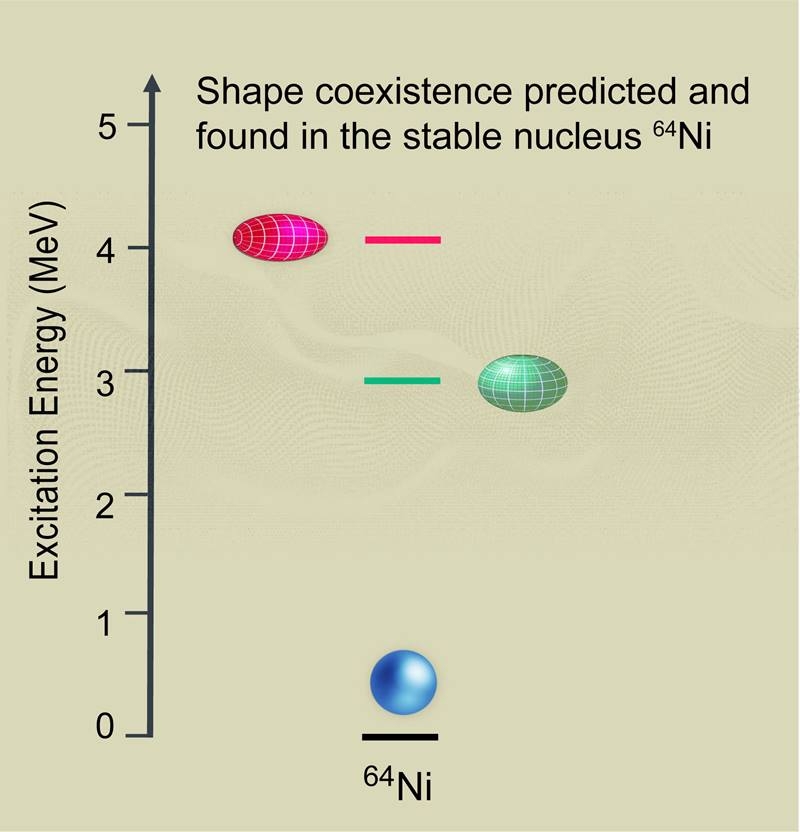Scientists face challenges in their understanding of nuclei. For instance, they have not connected the description of the size of nuclei with the theory of the strong nuclear force, and it is not clear if theories of atomic nuclei can provide a reliable description of nuclear matter.
Tag: nuclei properties
Precision Measurements of Radioactive Molecules for Fundamental Physics
For the first time, nuclear physicists made precision measurements of the short-lived radioactive molecule, radium monofluoride (RaF). The researchers combined ion-trapping and specialized laser systems to measure the fine details of the quantum structure of RaF. This allowed them to study the rotational energy levels of RaF and determine its laser-cooling scheme.

Stable Nickel-64 Nuclei Take Three Distinct Shapes
Scientists have identified three distinct shapes in stable nickel-64 that appear as energy is added to the nucleus. The nucleus in the lowest-energy state is spherical, then takes elongated (prolate) and flattened (oblate) shapes as the protons and neutrons surrounding the nucleus gain energy. This demonstrates profound changes in the way protons and neutrons can arrange themselves.

Solving for nuclear structure in light nuclei
The dense region at the center of an atom is a place where scientists can test their understanding of the fundamental interactions. A recent publication contributes to a body of increasingly accurate, descriptive calculations of nuclear structure and reactions.